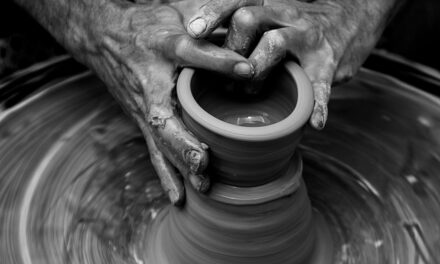Jean-Baptiste-Siméon Chardin was born on 2nd November 1699 in Paris, France, into a family of modest means. His father was a merchant, and his mother was a housewife, which provided Chardin with a humble upbringing that would later influence his artistic sensibilities. From an early age, he exhibited a keen interest in the arts, often sketching the world around him.
His formal education began at the age of 13 when he became an apprentice to a painter named Pierre-Jacques Cazes. This apprenticeship was crucial in shaping his foundational skills and understanding of the techniques that would later define his career. Chardin’s education did not stop with his apprenticeship; he continued to refine his craft by studying the works of the Old Masters.
He was particularly drawn to the still-life genre, which would become his signature style. His exposure to the works of artists such as Caravaggio and the Dutch masters instilled in him a deep appreciation for light, texture, and composition. By the time he was in his twenties, Chardin had begun to establish himself as a promising artist, participating in exhibitions and gaining recognition for his unique approach to still life and genre painting.
Summary
- Jean-Baptiste Pater was born in Valenciennes, France, in 1695 and received his artistic training in Paris.
- Pater was heavily influenced by the work of Antoine Watteau and developed a style known for its delicate brushwork and playful subject matter.
- Pater achieved great success during his lifetime, becoming a member of the Académie Royale de Peinture et de Sculpture in 1728.
- His notable works often depicted scenes of elegant outdoor gatherings and themes of love, music, and leisure.
- Pater’s contribution to Rococo art lies in his ability to capture the lighthearted and carefree spirit of the era, influencing future artists in the genre.
Artistic Influences and Style
Chardin’s artistic influences were diverse, drawing from both the Baroque and Rococo movements that dominated the French art scene during his lifetime. While he admired the grandeur of Baroque art, he found himself more aligned with the intimate and delicate qualities of Rococo. His style is characterised by a focus on everyday subjects, often depicting simple domestic scenes that resonate with viewers on a personal level.
This emphasis on the mundane was a departure from the grand historical and mythological themes prevalent in much of the art of his time. The use of light and shadow in Chardin’s work is particularly noteworthy. He mastered the technique of chiaroscuro, which allowed him to create depth and dimension in his paintings.
His palette was often muted, favouring earthy tones that enhanced the realism of his subjects. This approach not only highlighted the textures of objects but also imbued them with a sense of warmth and familiarity. Chardin’s ability to capture the essence of everyday life set him apart from his contemporaries and laid the groundwork for future generations of artists who sought to explore similar themes.
Career and Success
Chardin’s career began to flourish in the 1730s when he gained admission to the prestigious Académie Royale de Peinture et de Sculpture. This milestone marked a significant turning point in his artistic journey, as it provided him with greater visibility and opportunities to showcase his work. His participation in the Salon exhibitions further solidified his reputation as a leading figure in French art.
By the mid-18th century, Chardin had become one of the most celebrated painters in France, attracting both critical acclaim and commercial success. His success can be attributed not only to his technical prowess but also to his ability to connect with audiences through relatable subject matter. Chardin’s paintings often depicted scenes of domestic life, such as children playing or women engaged in household tasks.
These themes resonated with viewers, allowing them to see reflections of their own lives within his work. As a result, Chardin’s paintings were highly sought after by collectors and patrons alike, further cementing his status as a prominent artist of his time.
Notable Works and Themes
Among Chardin’s most notable works are “The Ray” (1728) and “The Soap Bubbles” (1733), both of which exemplify his mastery of still life and genre painting. “The Ray” is particularly striking for its meticulous attention to detail and composition, showcasing a fish laid out on a table alongside various kitchen utensils. The interplay of light and shadow creates a sense of realism that draws viewers into the scene, inviting them to appreciate the beauty of everyday objects.
In “The Soap Bubbles,” Chardin captures a moment of childhood wonder as a young boy gazes at a soap bubble floating before him. This painting encapsulates themes of innocence and fleeting beauty, reflecting Chardin’s ability to evoke emotion through simple yet profound imagery. His works often explore themes of domesticity, childhood, and the passage of time, inviting viewers to contemplate their own experiences within these universal narratives.
Pater’s Contribution to Rococo Art
While Jean-Baptiste-Siméon Chardin is often associated with the Rococo movement, it is essential to acknowledge the contributions of Antoine Watteau and Jean-Baptiste Pater, who played pivotal roles in shaping this artistic style. Pater, in particular, was known for his charming depictions of pastoral scenes and elegant figures engaged in leisure activities. His work exemplified the playful spirit of Rococo art, characterised by its emphasis on grace, beauty, and light-heartedness.
Pater’s contributions to Rococo art extended beyond mere aesthetics; he helped define the genre by infusing it with a sense of narrative and emotion. His paintings often featured idyllic landscapes populated by elegantly dressed figures, creating a sense of escapism that resonated with audiences seeking respite from the rigours of daily life. Through his innovative compositions and use of colour, Pater established himself as a key figure within the Rococo movement, influencing subsequent generations of artists who sought to capture similar themes.
Patronage and Relationships with Other Artists
Throughout his career, Chardin enjoyed patronage from various members of the French aristocracy, which significantly contributed to his success as an artist. His ability to forge relationships with influential patrons allowed him to secure commissions for private collections and public exhibitions alike. Notably, he received support from prominent figures such as Madame de Pompadour, who recognised his talent and championed his work within elite circles.
Chardin’s relationships with other artists were equally important in shaping his career. He maintained friendships with contemporaries such as François Boucher and Jean-Baptiste Greuze, engaging in discussions about artistic techniques and philosophies. These interactions not only enriched Chardin’s understanding of art but also fostered a sense of camaraderie within the artistic community.
The exchange of ideas among these artists contributed to the evolution of French art during this period, as they collectively navigated the shifting tastes and preferences of their audiences.
Pater’s Technique and Materials
Pater’s technique was characterised by a delicate touch and an emphasis on colour harmony that defined much of Rococo art. He employed a variety of materials in his work, including oil paints on canvas, which allowed him to achieve vibrant colours and intricate details. His brushwork was often fluid and expressive, lending a sense of movement to his compositions that captivated viewers.
One notable aspect of Pater’s technique was his ability to create atmospheric effects through layering and glazing. By applying thin layers of paint over one another, he could achieve depth and luminosity in his works that enhanced their overall impact. This meticulous approach to painting not only showcased Pater’s technical skill but also reflected the broader trends within Rococo art that prioritised elegance and refinement.
Reception and Legacy
Chardin’s reception during his lifetime was overwhelmingly positive; he was celebrated for his innovative approach to still life and genre painting. Critics praised his ability to elevate everyday subjects into works of art that resonated with audiences on an emotional level. However, as tastes shifted towards more dramatic themes in the late 18th century, Chardin’s popularity waned somewhat.
Despite this decline, he remained respected among fellow artists and collectors who recognised the significance of his contributions to French art. In terms of legacy, Chardin’s influence can be seen in the works of later artists who sought to explore similar themes of domesticity and simplicity. His focus on everyday life paved the way for movements such as Realism in the 19th century, where artists like Gustave Courbet would further challenge traditional notions of subject matter in art.
Today, Chardin is regarded as one of the foremost still-life painters in history, with his works continuing to inspire contemporary artists who seek to capture the beauty found within ordinary moments.
Pater’s Personal Life and Relationships
Jean-Baptiste Pater’s personal life remains somewhat enigmatic due to limited documentation; however, it is known that he was born into an artistic family in 1695 in Valenciennes, France. His father was a painter as well, which likely influenced Pater’s early interest in art. Throughout his life, Pater maintained close relationships with fellow artists and patrons who played significant roles in shaping his career.
Pater’s romantic relationships are less well-documented but are believed to have influenced some aspects of his work. The themes of love and leisure present in many of his paintings suggest an appreciation for beauty and romance that may have stemmed from personal experiences. These relationships not only enriched Pater’s artistic vision but also contributed to the overall spirit of joyfulness that characterises much of Rococo art.
Pater’s Impact on the Art World
Pater’s impact on the art world extends beyond his individual works; he played a crucial role in defining the Rococo style that emerged during the early 18th century. His ability to blend elegance with playful themes resonated with audiences seeking beauty and escapism during a time marked by social change and upheaval. By focusing on leisure activities and idyllic landscapes, Pater captured the essence of an era that celebrated pleasure and refinement.
Moreover, Pater’s influence can be seen in subsequent generations of artists who embraced similar themes within their work. His emphasis on colour harmony and graceful compositions inspired artists across Europe, contributing to the evolution of styles such as Romanticism and Impressionism. Today, Pater is remembered not only for his individual contributions but also for his role in shaping broader artistic movements that continue to resonate within contemporary art.
Where to See Pater’s Works Today
Jean-Baptiste Pater’s works can be found in various prestigious collections around the world, showcasing his enduring legacy within the art community. Notable institutions such as The Louvre Museum in Paris hold several examples of Pater’s paintings, allowing visitors to appreciate his mastery firsthand. Additionally, The National Gallery in London features works by Pater alongside other prominent artists from the Rococo period.
For those interested in exploring Pater’s contributions further, exhibitions dedicated to Rococo art often include selections from his oeuvre alongside works by contemporaries like Watteau and Boucher. These exhibitions provide valuable context for understanding Pater’s place within this vibrant artistic movement while highlighting the interconnectedness between different artists during this period. Whether through permanent collections or temporary exhibitions, Pater’s works continue to captivate audiences today, ensuring that his legacy endures for future generations to appreciate.
If you are interested in learning more about the techniques used by artists like Jean-Baptiste Pater, you may want to check out this article on highlighting techniques in acrylic. Understanding how to use light and shadow effectively can greatly enhance your artwork and bring it to life. This article provides valuable insights into this important aspect of painting.


